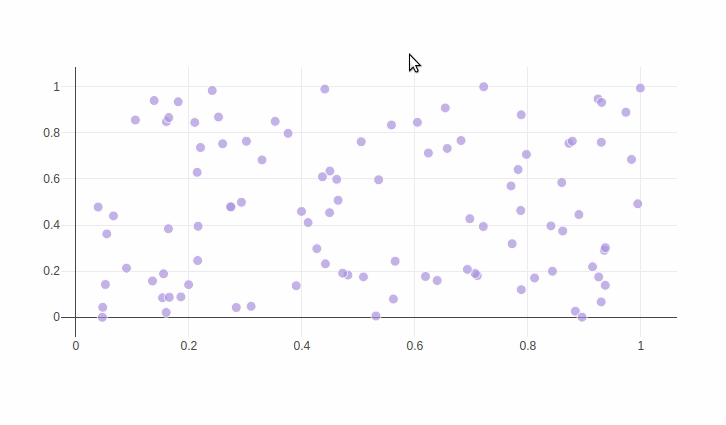jupyter
jupytext
kernelspec
language_info
plotly
notebook_metadata_filter
text_representation
all
extension
format_name
format_version
jupytext_version
.md
markdown
1.1
1.1.7
display_name
language
name
Python 3
python
python3
codemirror_mode
file_extension
mimetype
name
nbconvert_exporter
pygments_lexer
version
.py
text/x-python
python
python
ipython3
3.6.5
description
display_as
language
layout
name
order
page_type
permalink
thumbnail
Click Events With FigureWidget
chart_events
python
base
Click Events
4
example_index
python/click-events/
thumbnail/figurewidget-click-events.gif
Update Points Using a Click Callback import plotly .graph_objects as go
import numpy as np
np .random .seed (1 )
x = np .random .rand (100 )
y = np .random .rand (100 )
f = go .FigureWidget ([go .Scatter (x = x , y = y , mode = 'markers' )])
scatter = f .data [0 ]
colors = ['#a3a7e4' ] * 100
scatter .marker .color = colors
scatter .marker .size = [10 ] * 100
f .layout .hovermode = 'closest'
# create our callback function
def update_point (trace , points , selector ):
c = list (scatter .marker .color )
s = list (scatter .marker .size )
for i in points .point_inds :
c [i ] = '#bae2be'
s [i ] = 20
with f .batch_update ():
scatter .marker .color = c
scatter .marker .size = s
scatter .on_click (update_point )
f
See these Jupyter notebooks for even more FigureWidget examples.
import plotly .graph_objects as go
f = go .FigureWidget ([go .Scatter ()])
help (f .data [0 ].on_click )